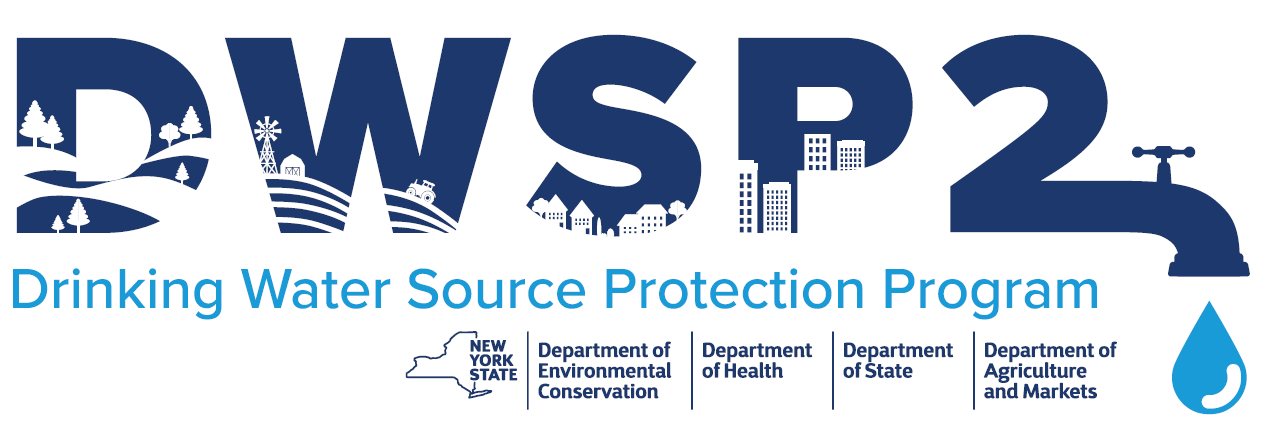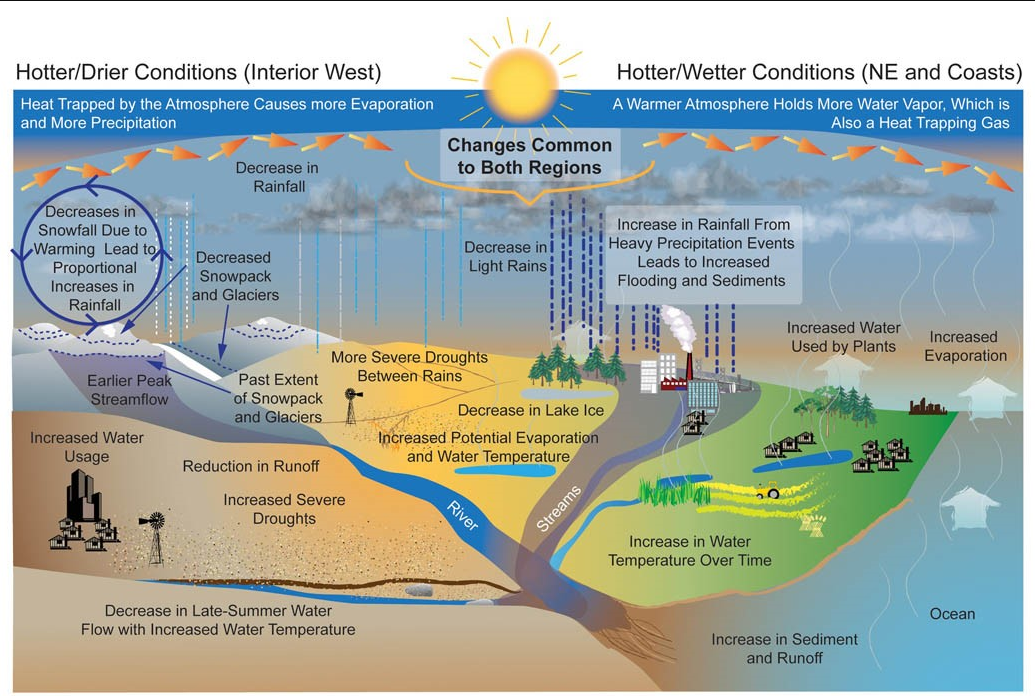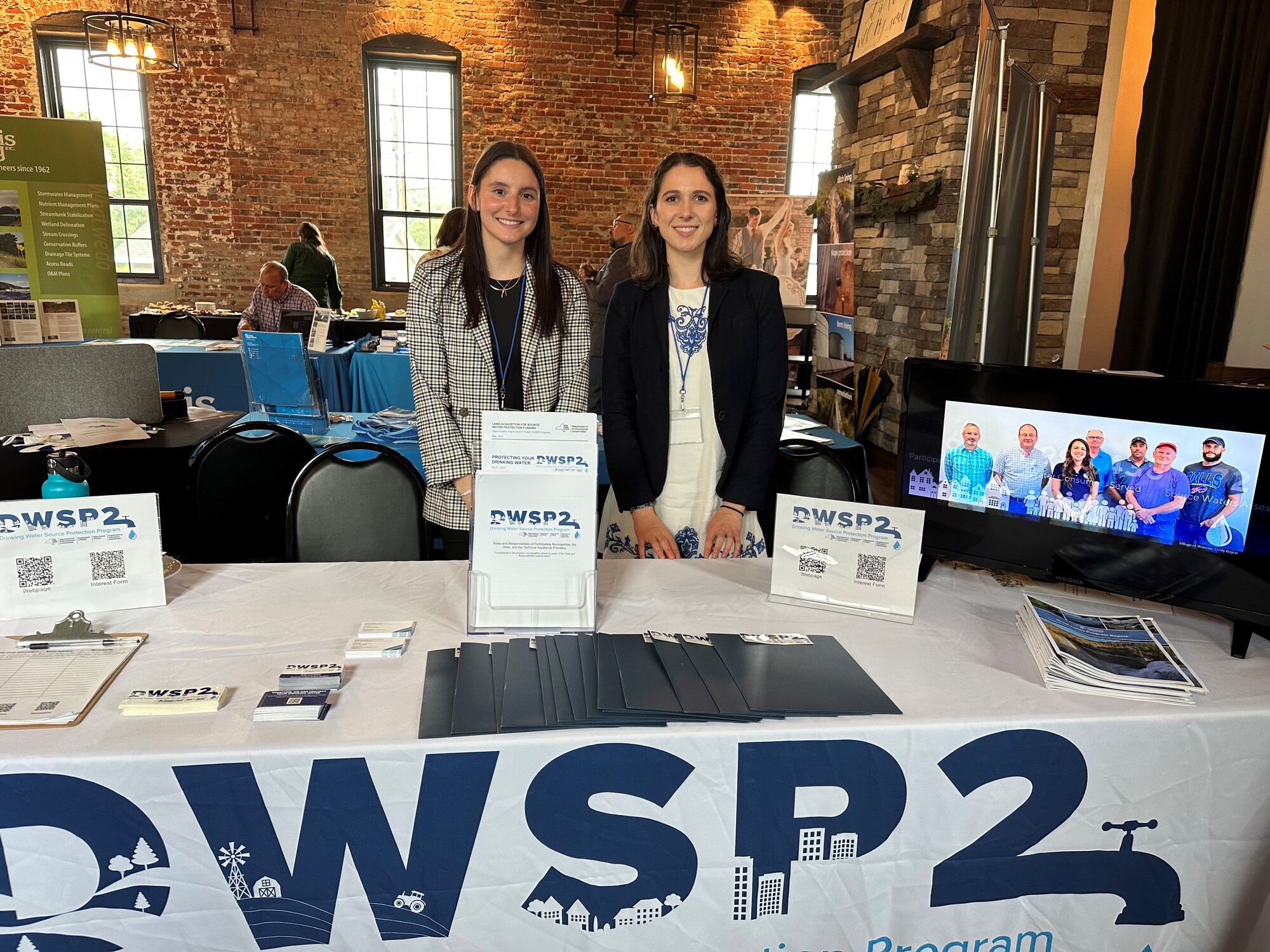Drinking Water Source Protection Program (DWSP2) Climate Change Newsletter
The New York State Department of Environmental Conservation sent this bulletin on 08/02/2023 03:00 PM EDT |
| DEC Delivers - Information to keep you connected and informed from the NYS Department of Environmental Conservation |
| View in browser |
|
Connecting Climate Change to New York's Drinking Water Sources |
|
In this month’s newsletter, the Drinking Water Source Protection Program (DWSP2) is focusing on the connection between source water protection and climate resilience. In New York State, climate change impacts have already begun and will continue to increase with continued global warming. With projections of sea level rise, increasing temperatures, and changes in precipitation patterns, climate change is likely to have impacts on drinking water sources. Municipalities can implement strategies that will not only protect their source of drinking water from potential contaminant sources now and into the future, but also increase resilience to climate change. This newsletter will cover the following topics:
Climate Change Impacts in New York StateClimate change impacts are already happening in New York State. The annual statewide average temperature has warmed 3°F (0.6°F per decade) since 1970. The state's average temperatures are projected to rise by as much as another 3°F by 2080. Rising annual temperatures are already causing widespread impacts on New York's communities and ecosystems and have direct impacts on water resources. Ocean and coastal temperatures along the northeastern U.S. have increased by 0.06°F per year from 1982 to 2016 and are projected to continue to warm faster than most marine waters around the world. Warming oceans contribute largely to sea level rise. Sea levels along New York's coast and in the Hudson River have already risen more than a foot since the year 1900 (about 1.2 inches per decade). In addition to increasing temperatures and rising sea levels, extreme storm events are becoming a greater threat to New York State. Approximately 65 hurricanes or tropical storms have struck New York since the mid-19th century. In 2011, Hurricane Irene and Tropical Storm Lee hit New York back-to-back, bringing damaging winds, extreme precipitation, and significant flooding to eight upstate counties. In 2012, Superstorm Sandy hit the east coast causing an estimated $19 billion in damages in New York State.
Climate Change Impacts on Drinking Water SourcesThe physical effects of climate change, described above, are impacting drinking water sources in New York State. Increased precipitation through more frequent heavy rain events caused by climate change are causing flooding throughout many parts of the state. This flooding can lead to increased discharges of untreated sewage from combined sewer overflows (CSOs). CSO discharges into source waters can reduce or impair water quality by increasing the presence of bacteria, nutrients, and other pollutants that can cause illness. This may cause further environmental impacts, as well as making drinking water more costly to treat. Heavy rainfall also contributes to water pollution by washing sediment and chemicals from the surface into nearby waterbodies, and overwhelming stormwater systems that overflow into rivers, streams, and other surface waters. Nutrient runoff from fertilized lawns following more frequent heavy rainfall events has led to an increase in harmful algal blooms (HABs) in many New York waterbodies. Combined with warmer water temperatures driven by climate change, HABs are occurring more often and lasting longer throughout the year. HABs are a major concern for recreational activities as well as drinking water treatment facilities. Microcystins are a type of toxin produced by some cyanobacteria present in HABs. Cyanobacteria blooms can produce harmful toxins that include several variants of microcystins. Microcystin variants differ in both occurrence and toxicity. Conventional water treatment is optimized during a HAB to ensure public water supplies are safe to drink. Public water supplies in New York State that use surface waters are treated, monitored, managed, and have operational controls to prevent people from being exposed to blue-green algae, associated toxins, and other contaminants. If contaminants are detected in your water supply above levels established to protect human health, you would be notified by your local water supplier and provided instructions. New York State has also initiated the New York Harmful Algal Bloom System to build awareness and reporting for HABs. New York Harmful Algal Bloom NotificationsThe New York Harmful Algal Bloom System, or “NYHABS,” features an interactive map to keep the public informed about HABs locations in New York. Instructions on how to use NYHABS are on DEC's HABs notification webpage. Groundwater availability may also be impacted by climate change. With heavier rainfall, more precipitation becomes surface runoff and flows directly to ponds, lakes, streams, and rivers. This means that a smaller volume of water infiltrates the soil to recharge aquifers and groundwater may not be as readily available. Due to higher temperatures, it is likely that there will be increased frequency and intensity of seasonal droughts. Seasonal droughts can decrease the natural rates of groundwater recharge, resulting in greater fluctuations in aquifer storage. In areas of intensive development where groundwater use is significant, seasonal drought can have detrimental effects on aquifer systems, including depressed water tables. In addition, freshwater resources along the coasts face risks from sea level rise. Sea level rise increases the likelihood of saltwater contamination to both groundwater and surface waters, which may lead to the supply no longer being used for drinking water consumption, crop irrigation, and more. More information on climate change impacts in New York.
Together We Can Protect Your Drinking Water: 5 DWSP2 Methods that Support Climate ResilienceSource water protection and climate change adaption strategies are closely linked. The information below highlights DWSP2 implementation methods that protect sources of drinking water and increase your community’s climate resilience. In addition, these actions also provide your community with environmental, public health, and economic benefits. Land Acquisition Acquiring land near or adjacent to your community’s source of drinking water helps protect water quality by reducing impacts from potential contaminant sources, stormwater run-off, and flooding. Land acquisition can lessen the impacts of heavier rain events by reducing run-off, which can carry sediment and nutrients, decreasing the likelihood of other negative impacts, such as harmful algal blooms. Land surrounding your municipality’s public drinking water source can be acquired through DEC’s WQIP Land Acquisition Program, which is currently accepting applications extended through August 11th. For more information view the WQIP Land Acquisition Webinar Recording. Intermunicipal Organization By partnering with neighboring municipalities, especially if you share a drinking water source, you can plan and implement source water protection and climate resilience strategies together. Collaboration can have a larger impact at the local level than implementing actions on your own. Sharing resources and planning projects together can increase your community’s adaptive capacity in the face of climate change and your ability to protect your source(s) of drinking water. Consistency with Other Local Plans Incorporating strategies into municipal plans to protect source water and build climate resilience is important to local planning efforts. One way to do this successfully is to incorporate goals from your DWSP2 plan in all municipal planning efforts such as your municipal comprehensive plan, climate action plan, hazard mitigation plan, and your open space plan. This will increase the success and avoid conflicting strategies in planning efforts. Zoning is an example strategy that could benefit both your source of drinking water and build climate resilience. Restricting specific types of development within your source water area can reduce the chance of contamination and protect water quality while also reducing infrastructure losses due to climate-enhanced flooding. Including zoning across municipal plans will help build awareness and recognition in your municipality while also ensuring that the zoning strategy is implemented. Critical Environmental Area Establishing Critical Environmental Areas (CEAs) is another strategy that communities can implement to protect their source of drinking water and reduce climate change impacts. CEAs help protect important local areas by providing a designation that requires municipalities to go through the State Environmental Quality Review (SEQR) process before initiating new development projects in the designated area. CEAs can protect drinking water sources, wetlands and forests, wellfields, and more. Designating land as a CEA provides your municipality with increased environmental benefits that also help protect drinking water sources and reduce climate impacts. Outreach and Education Conducting outreach and education can keep your community up to date on the efforts your municipality is implementing at the local level to protect your community’s source of drinking water and increase climate resilience. Outreach and education help increase community buy-in and homeowner adoption of best management practices, such as decreasing the use of lawn fertilizers that contribute to polluted run-off. There are many outreach and education strategies to select from in the DWSP2 Framework (PDF). Building awareness and educating your community can help ensure that your efforts have a lasting impact and mitigate water quality and climate change impacts into the future. Planning and implementing adaptation and resilience measures, like the examples provided above, by participating in DWPS2, can reduce risks and vulnerabilities to current and future climate change impacts to drinking water. Planning for current and future impacts of climate change requires using available resources to identify and mitigate those impacts to protect sources of drinking water. The goal of the Drinking Water Source Protection Program (DWSP2) is to protect your municipality’s public drinking water sources, and incorporating consideration of current and future climate change impacts can also increase community climate resilience. Additional tools and guidance documents on climate resilience and adaptation can be found in the DWSP2 Framework (PDF). For more information, fill out the DWSP2 Interest Form or email source.water@dec.ny.gov. What’s New with DWSP2DWSP2 has taken the show on the road! We’ve been traveling throughout New York State to present DWSP2 to a wide variety of municipal audiences. The opportunity to talk face-to-face with interested and currently participating DWSP2 municipalities is valuable to the program.
DWSP2 Technical assistance providers: Colleen Bradley and Madeline Silecchia tabling at the Tug Hill Commission – Black River Watershed Alliance Conference. Here are the events we’ve attended so far this spring and summer:
If your organization has any upcoming events and would like DWSP2 to participate, reach out to source.water@dec.ny.gov. DWSP2 also provides community-specific info sessions, find out more by filling out the DWSP2 Interest Form or emailing source.water@dec.ny.gov. Deadline Extended for DEC Grant OpportunitiesThe deadline for the following grant programs was extended from July 28 to Aug. 11:
Connect with us on social mediaFollow DEC on Instagram to see what more you can learn about Connecting Climate Change to Drinking Water. Share Your ThoughtsHave you begun this process? Or, do you have a program or are aware of a program relevant to source water? Send in any helpful hints or information at source.water@dec.ny.gov and we may highlight them! Sign UpTo sign-up for the DWSP2 newsletter, visit the DWSP2 webpage. Newsletter ArchiveMissed last month's edition? Visit the DWSP2 Newsletter Archive to stay up to date. |


 Flooding in Binghamton following Tropical Storm Lee in 2011. Photo credit: Bill Walsh
Flooding in Binghamton following Tropical Storm Lee in 2011. Photo credit: Bill Walsh Projected changes in the water cycle. Source:
Projected changes in the water cycle. Source: 